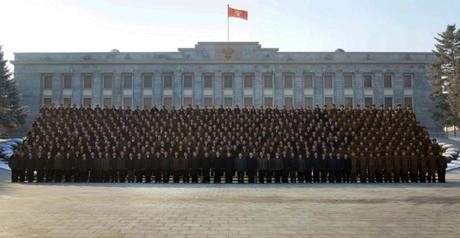
Kim Jong Un poses for a commemorative photo with personnel involved in the January 2016 nuclear test in front of the WPK Central Committee Office Building #1 (Photo: Rodong Sinmun).
(The following was written during mid-January 2016 after Kim Jong Un attended a commemorative photo-op with the DPRK’s nuclear test personnel. In light of the February 2016 space launch, Kim Jong Un’s numerous nuclear- and missile-related on-site visits during March 2016, and the launch of the 70-Day Speed Battle this analysis is now being publicized. Information cut-off for this analysis is January 13, 2016)
The DPRK’s newly confirmed WMD chief hails from a hardline organization charged with enforcing Kim Jong Un’s will across the country’s political system, hinting at an effort to tighten control of unconventional weapons operations and potentially presaging even more aggressive nuclear and space activities. This fits with a recent trend in the DPRK’s political culture in which more hardline officials seems to have filled other criticial positions in the upper echelon of the country’s national security community including the intelligence community and military operations. Aware of external pressures from the US, ROK, Japan and even China and Russia, the hardliners derive spiritual justification because they can pursue a more hawkish policy line which includes boosting WMD development, continued technological advances in conventional weapons and tightening social and economic controls. There is also the possibility that Kim Jong Un is maintaining a power balance between entrneched party and military interests. North Korea’s nuclear weapons program is tied to a hardline faction consisting of senior party leadership and elements of the Korean People’s Army interested in military modernization–including WMD development and the expansion electronic and cyber capabilities. This faction has typically opposed North Korean military participation in public infrastructure projects and other development intitiatives benefitting the civilian economy. So, as a trade-off, the KPA attains progress in developing nuclear weapons whilst supplying personnel to work on projects and providing food to sectors of the DPRK’s civilian economy.
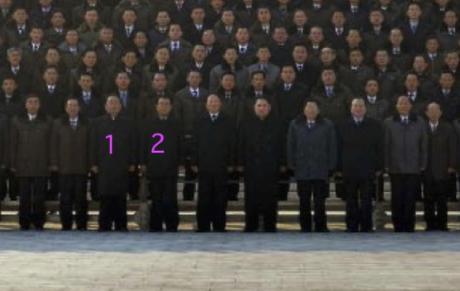
Ri Pyong Chol (1) and Ri Man Gon (2) attend a commemorative photo-op with personnel involved in the January 2016 nuclear test (Photo: Rodong Sinmun).
In a commemorative photo staged with the supreme leader and personnel involved in North Korea’s fourth nuclear test, DPRK state media revealed Ri Man Gon as the new director of the the Workers Party of Korea (WPK) Machine-Building Industry Department (MBID). In his new role, Ri will help to formulate and implement policies for the research, development and production of conventional and unconventional weapons, as well as space assets.
Prior to his MBID appointment late last year, Ri served from 2010 to 2015 as the regime’s regional boss in North Pyongan, a province that includes major WMD- and space-related sites such as the Yongbyon Nuclear Scientific Research Center and the Sohae Satellite Launching Station, as well as numerous machine plants, arms factories and support facilities. [1] In September 2015, as the chief provincial party secretary, Ri Man Gon accompanied Jong Un on a visit to the Sinu’iju Measuring Instrument Factory, whose products are part of the Kwangmyo’ngso’ng satellites and U’nha rockets. This factory visit also gathered other top WMD and space officials including Kim Chun Sop, Ri’s predecessor as head of the MBID, Chairman of the Second Economy Commission (Second Economic Committee) Jo Chun Ryong and Vice Minster of the People’s Armed Forces Colonel-General Yun Tong Hyon. Prior to 2010, Ri Man Gon worked in the WPK Organization Guidance Department, where he rose to the position of deputy director. By appointing Ri to the MBID, Kim Jong Un tapped an experienced political manager with an excellent grasp on the country’s levers of power.
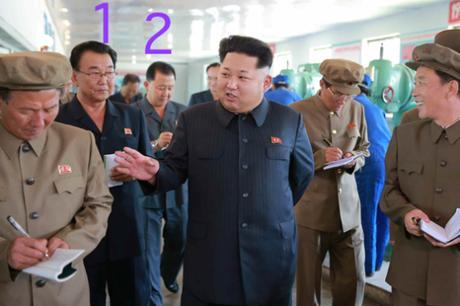
Ri Man Gon (1) accompanies Kim Jong Un on a tour of the Sinu’iju Measuring Instrument Factory during September 2015. Also in attendance at that visit was Second Economic Committee Chairman Jo Chun Ryong (2) (Photo: Rodong Sinmun/KCNA).
Ri Man Gon replaces Kim Chun Sop, who held the top MBID position for about a year. Kim was probably dismissed because of a series of setbacks in the DPRK’s missile development, including failed accomplishments in the development of a submarine-launched ballistic missile and a November 2015 failed missile test that ROK sources say was seen by Kim Jong Un.
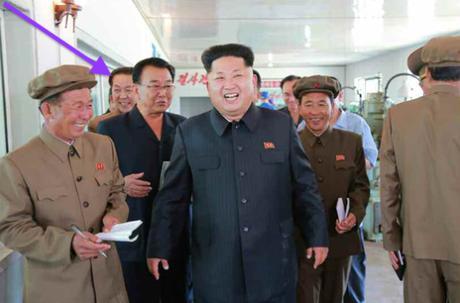
Ri Man Gon and his predecessor Kim Chun Sop (annotated) at Sinu’iju Measuring Instrument Factory in September 2015 (Photo: KCNA).
The appointments of Ri and his immediate predecessor were part of a major generational change among the senior managers, scientists, researchers, technicians and military personnel involved in its nuclear weapons and long-range missile programs. Ri is in his sixties and Kim Chun Sop was in his late fifties. Even though these ages might strike some observers on the older side, their immediate predecessors were in their 70s and 80s.
This shift—undertaken by Kim Jong Il and pursued further by Kim Jong Un—reflects an effort by the WPK to consolidate control over WMD research, development and production into the MBID, which is subordinate to the WPK Central Committee and takes its direction from the party’s Central Military Commission (CMC). The CMC, which publicly meets in expanded sessions (i.e. opened to non-CMC members drawn from the senior and mid-level command staff of the Korean People’s Army and the DPRK’s security agencies) represents an effort by Kim Jong Un to involve the military in political affairs (albeit only defense and arms policies) and to extend the party’s role in military affairs (particularly development and infrastructure projects using military personnel). Attaining this civil-military power balance, an essential characteristic of Kim Jong Un’s style of leading the DPRK, has not gone smoothly and, to a certain degree, contributed to the vertiginous personnel shuffles within the military’s high command and the party leadership. This is a matter of the core leadership removing ambiguity in external observers about whether the party or military controls WMD programs and telecasting to outside observers that in this regard the party occupies the driver’s seat in WMD programs.
The personnel changes of recent years have also strengthened the WMD program’s relationship with the WPK Organization Guidance Department (OGD), the party’s so-called nerve center. Superficially, OGD’s growing influence represents stronger party control over nuclear- and space-related research and production. Because its mission is to establish the Kim Family’s monolithic leadership in North Korea and underscore the ideological righteousness of Kim leadership, OGD is generally more hardline in its international outlook than the broader party, and it has traditionally aligned itself with the more hawkish elements of the Korean People’s Army (KPA). It was through OGD that late leader Kim Jong Il established So’ngun, or military first politics, in which military affairs and defense acquisitions were prioritized by DPRK policymakers over the development of the domestic, civilian economy during the 1990s.
Why would Kim Jong Un need hardliners? OGD manages political education and ideological indoctrination of party members in particular and North Korean citizens in general. Under these auspices, with sanctions-hungry enemies at their gate, OGD can continue to inculcate the DPRK’s population in continued development of nuclear weapons even if it detracts from domestic economic development and might command sacrifice from party members and citizens alike. This is legitimization process of the country’s WMD programs. OGD also has a useful function in terms of the efficiency of the development of nuclear weapons and further nuclear testing. It has access to, and largely manages, the communications channels and nodes of control through which the regime operates. Official, technical and financial information and activities within the DPRK are highly compartimentalized. Realizing the country would face sanctions and a lot of international noise for its fourth nuclear test, Kim Jong Un has installed someone like Ri Man Gon who can access critical information and interface with the North’s bureacracy more efficiently. There is a very good chance that Ri Man Gon was appointed because Kim Jong Un and his close aides knew they would face sanctions and increased scrutiny because of the fourth test.
The appointment of a senior OGD figure like Ri Man Gon and the OGD’s reasserted omnipresence in WMD development involves skilled managers who can cut through the DPRK’s bureacracy and ensure efficiency in the development of WMDs. This is likely to lend itself to additional testings–due to a streamlined process–and different, more innovative tests, because OGD can facilitate a better interface (through direct reporting channels) with research scientists allowing them to communicate directly to the leader (or at least the man briefing the leader) about their priorities and needs.
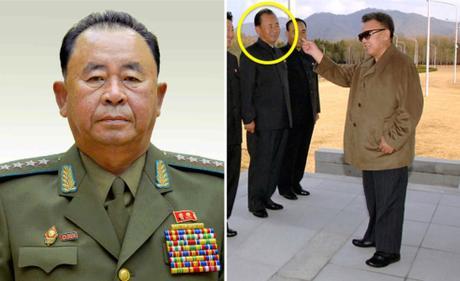
Former air force commander and Senior Deputy Director of the OGD Ri Pyong Chol. At right Ri Pyong Chol attends Kim Jong Il’s first confirmed public appearance following the late leader’s stroke in 2008 (Photos: Rodong Sinmun/NK Leadership Watch file photo).
Standing with Ri Man Gon in the commemorative photo was Ri Pyong Chol, an OGD senior deputy director. From 2007 to 2014, Ri Pyong Chol was commander of the KPA Air and Anti-Air Force and spent his entire career as a uniformed member of the military, eventually reaching the rank of four-star general. In late 2014, Ri shed his military uniform for the civilian garb of a senior party cadre. On a separate note, Ri Pyong Chol’s appointment to OGD occurred in the same year that another official, Hwang Pyong So, was elevated from OGD senior deputy director to the rank of vice marshal and appointed director of the KPA General Political Department (GPD), establishing him as the DPRK’s de facto number-two official behind Kim Jong Un. With their appointments, Kim Jong Un swapped two officials between senior levels of the military and party. Through this kind of exchange, Kim Jong Un is trying to attain a power balance between two influential constituencies in the core leadership.
The timing of Ri Pyong Chol’s appointment—after Hwang Pyong So had moved to GPD from his prior position as OGD senior deputy director—offered an earlier, circumstantial hint that Ri had taken over Hwang’s former OGD portfolio, which included military affairs and production of arms, including WMD. Hwang Pyong So’s prior WMD responsibilities at OGD were evident when he attended Kim Jong Un’s field inspection of the KPA Strategic Rocket Force Command in February 2012.
Ri Pyong Chol’s appearance in the photo-op confirmed that the official has fully assumed his predecessor’s role as the regime’s leading political manager for arms production, and it further underscored OGD’s role in North Korea’s nuclear and space activities.
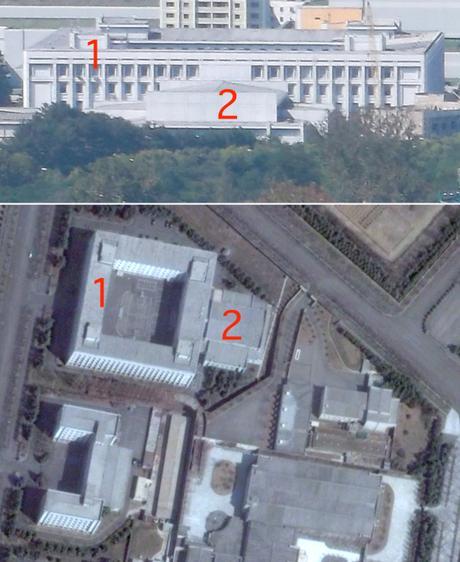
The buildings of the WPK Organization Guidance Department and Liaison Office in the WPK Central Committee Office Complex #1 in central Pyongyang (Photos: NK Leadership Watch and Digital Globe).
OGD and WMD Programs
A discussion of OGD’s function and its relationship with the nuclear weapons program is critical to understanding the significance of Ri Man Gon’s appointment as director of MBID, and the significance of his attendance with Ri Pyong Chol at the nuclear test photo-op. OGD is responsible for implementing the Suryong’s “monolithic leadership” over North Korea. Its tentacles stretch through the entire DPRK political system, including the party, military, government and economy.
OGD’s responsibilities include monitoring and regulating the membership status and activities of the WPK’s estimated three million members. It controls the political affairs and personnel appointments of the WPK’s main party organizations, including the central party system (the thousands of cadres and functionaries working for the WPK Central Committee in Pyongyang), the provincial party committees, city and county party committees and the numerous party committees and organizations that exist at all levels of the DPRK government, the KPA, cultural and educational institutions, and many of North Korea’s factories, mines and farms. In addition to its personnel and surveillance functions, OGD directs the activities of all WPK members, including ideological education and indoctrination; criticism and self-criticism sessions; attendance at rallies, performances and other public events; participation in civic endeavors such as construction and public works projects; and contributions of money, food and supplies to party projects. OGD personnel assess and record these activities in files on each WPK member’s “Party Life,” producing data that can determine eligibility for a job promotion, school acceptance, social welfare benefit or permission to trade in a market. Through this system, the Suryong and members of the core leadership can communicate policies, messages and ideological instruction, as well as enforce order within the workforce that forms the backbone of the North Korean political system.
Its three hundred-member staff carries out entry- and senior-level appointments, dismissals, demotions and terminations in the party, army and government, and it is through these powers that the office exerts its primary influence over the WMD program. Its security organization and central party guidance sections link with the WPK Cadres’ Affairs Department to collaboratively carry out nuclear- and space-related appointments at all levels, including WPK Central Committee deputy directors, bureau heads and section chiefs; relevant Cabinet ministers and vice ministers; department directors-general; commission personnel; and academics (deans, department chairs and faculty).
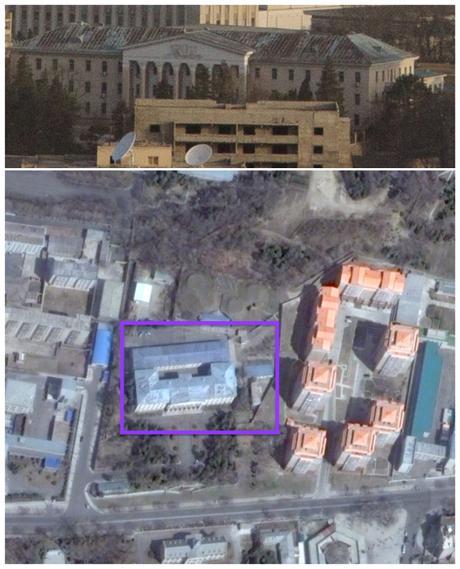
The WPK Cadres’ Affairs office building in the WPK Central Committee Office Complex #1 in central Pyongyang (Photos: NK Leadership Watch and Digital Globe).
The WPK Cadres’ Affairs Department originally was part of OGD during the 1970s. Kim Jong Il placed cadres’ affairs’ sections throughout the party, military and state to monitor the activities of officials (cadres) and receive reports through channels separate from his father Kim Il Sung. The current Secretary and Director of WPK Cadres Affairs is Kim P’yo’ng-hae, Ri Man Gon’s predecessor as chief secretary of North P’yo’ngan’s WPK Provincial Committee, and himself a former OGD deputy director. For a number of years, Cadres Affairs’ secretary and director was the late Kim Ku’k-t’ae, another former OGD deputy director.
OGD also approves and regulates military personnel appointments and military promotions, and it oversees elements of the KPA General Staff and Ministry of the People’s Armed Forces (MPAF) involved in nuclear and missile tests. Among the KPA bureaus involved in nuclear weapons development and weapons testing are the KPA General Logistics Department (under MPAF), the KPA General Rear Services Department, the KPA General Staff Nuclear-Chemical Bureau, the KPA General Staff Ordnance Bureau and the KPA General Staff Communications Bureau. In addition, the OGD administration section (formerly the WPK Administration Department led by the late Jang Song Taek) is involved in personnel appointments in the internal security agencies responsible for protecting defense-related facilities.
From 1974 until 1989, and then from 1991 until 2011, the OGD Director was the late DPRK leader Kim Jong Il. Since his death, the director has been Kim Jong Un. OGD senior deputy directors and its deputy directors have policy portfolios (internal security, military affairs, Cabinet and domestic economy, local affairs, munitions productions) that include personnel appointments, situational awareness and policy implementation. OGD senior deputy and deputy directors are realistically some of the most powerful people in the DPRK after the Suryong.
In addition to all of these functions and responsibilities, OGD also serves as the Suryong’s gatekeeper for official communications and what officials, functionaries and even North Korean citizens have direct, physical access to Kim Jong Un. It manages and staffs the Liaison Office where written reports, policy documents and briefings are channeled to relevant party offices then submitted to the Supreme Leader for review. OGD’s 5th Section is also responsible for appointing and managing various staff who work in Kim Jong Un’s executive office, also known as the Personal Secretariat. The 5th Section employs numerous technical and administrative assistants who staff Jong Un’s offices, domestic and technical staff who work in his residences and numerous musicians (the Wangch’aesan Light Music Troupe, Moranbong Band), entertainers, chefs and “juicy girls” who work in the central party’s entertainment facilities. Under Kim Jong Il, the 5th Section was responsibile for recruiting and appointing members of the “Joy Brigades.” Interestingly, Personal Secretariat personnel use OGD job titles (deputy director, section chief, etc.) to conceal where they actually work and to attain the generous housing and social welfare benefits commensurate to OGD personnel. Using OGD positions as a formal job title, essentially a cover, applies to other select senior party, military and government personnel.
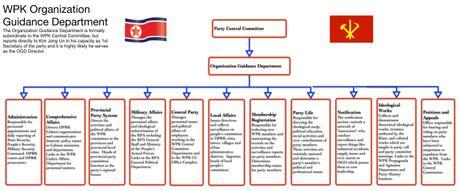
Key sections of the WPK Organization Guidance Department (Photo: NK Leadership Watch graphic).
OGD helps to shape the undergraduate and graduate classes of the major universities involved in WMD education and training, and the office helps to usher newly minted specialists into positions in their respective fields. Specifically, OGD helps to designate schools for prospective university students at the provincial level, and its personnel play a role in determining the job or graduate school assignments of matriculated students. At the non-professional level, OGD guidance sections help to select industrial and technical personnel (including their training and job assignments) involved in nuclear tests.
The DPRK’s WMD and nuclear civilian personnel are some of the most closely monitored and socially controlled populations in the country. Guidance staff in OGD’s security organizations and administration sections conduct overt and covert surveillance on the social and personal lives of nuclear research and production personnel. More broadly, OGD coordinates with the Ministry of State Security and local government bodies to monitor North Korean citizens, and it cross-checks security, financial, incident and industrial reports submitted through formal channels. This control gives OGD personnel access to all kinds of information in a system and country in which the supreme leader typically monopolizes information and subjects subordinates to highly compartmentalized information and communication channels.
The Party Life and ideological education sections of OGD help to evaluate the ideological reliability and ideological indoctrination of nuclear scientists, technicians and personnel, resulting in assessments that inform party membership and employment decisions. On the military side, due to the sensitive nature of their work, KPA personnel involved in the WMD programs are heavily indoctrinated by commissars of the KPA General Political Department (which works directly to OGD) and closely watched by the GPD and the Military Security Command (also linked to and managed by OGD). The Military Security Command is also involved in watching and compiling surveillance reports on the activities of the nuclear families of active-duty KPA officers. This would particularly apply to KPA personnel involved in WMD programs. Similarly, OGD closely watches the job performance and personal activities of participating military personnel, and it signs off on military promotions and duty assignments.
Yet for all its power, OGD is no god. It exists to promulgate and enforce the supreme leader’s policy directives, a subordinate role made clear when Kim Jong Un issued his December 15 authorization for the DPRK to conduct its fourth nuclear test. The office communicated the core leadership policies to various subordinate party, military and government institutions, bureaus, sections and production sites, down to the level of small working groups, research teams and manufacturing shops in factories. On the civilian side, it does this through guidance officials and organization secretaries who manage primary party committees and party cells that are prevalent throughout North Korean institutions.
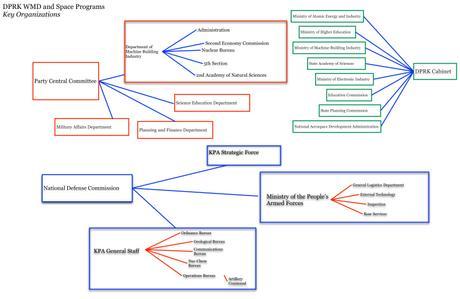
Key party, army and state organizations involved in the DPRK’s WMD and space programs (Photo: NK Leadership Watch graphic).
The authorization, issued in his capacity as First Secretary of the WPK, initiated the execution of the action plan and orders of operation for the test. It was passed onto the substantive and logistical organizations of the party (in this case the MBID and its subordinate bodies, the Second Economic Committee and the Second Academy of Natural Sciences), the KPA (through the MPAF and General Staff) and the DPRK Cabinet (through the Ministry of Atomic Energy Industry and Ministry of Higher Education) who were involved in the test, as well as security organizations who would ensure protection of the test site, increase internal travel controls (particularly traffic closures around Yanggang and North Hamgyo’ng provinces near the test site) and increase monitoring of the movements of the North Korean population.
As relevant substantive officials began technical and logistical preparations for the test, OGD used its own channels to communicate the authorization documents to the party secretaries, committees and party cells attached to participating substantive and logistics organizations. The guidance officers in these party cells and committees then monitored the substantive and logistics officials involved to ensure complete compliance with the authorization documents. While the substantive and logistics personnel issued progress and status reports up their respective bureaucratic channel (such as the MIBD, Second Economic Committee, General Staff, or MPAF), the guidance and notification officials issued their own separate reports to OGD.
This dual-report system allowed Kim Jong Un and his close aides to cross-check and corroborate the integrity of the information he received and provides him with critical situational awareness to inform his decisions he made in collaboration with the core leadership. At the same time, the OGD channels allowed him to interact with and manage mid- and even low-level officials involved in the test. Guided by his elaborate support system, Kim Jong Un could provide final authorization on January 6 for the test to proceed.
Rise of the OGD Illumnati
OGD has received a lot of scrutiny from international media and Pyongyang watchers over the last two years, in part for its direct involvement in the 2013 dismissal and execution of Jang Song Taek. In 2014, a defector’s memoir and subsequent media commentaries claimed that OGD, not Kim Jong Un, was running the DPRK. While the former assertion was true, the latter assigned too much autonomy to an entity whose sole mission is to establish the Suryo’ng’s supreme leadership, enforce discipline among cadres and ensure that the leader’s instructions are being implemented. OGD is certainly quite powerful, but it is only effective as the supreme leader it supports.
Due to the current conversation about the OGD’s omnipotence (real and exaggerated) in DPRK political culture, and given Ri Man Gon’s appointment and Ri Pyong Chol’s presence at the nuclear test personnel photo-op, one might see this as OGD having consummated the power it has gained during the last two years. This is not the case. OGD has always held a preeminent position in governance of North Korea’s WMD activities, and in fact, it was through OGD that the current institutional structure of programs came into being.
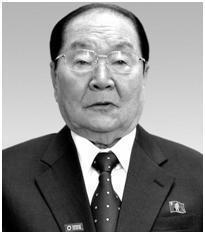
Former WPK Secretary and Director for Munitions Industry Jon Pyong Ho (Photo: NK Leadership Watch file photo).
During the mid-1970s, North Korea’s arms research and manufacturing activities were dispersed and subordinated to various party, military and state departments and agencies. It was the OGD, and an OGD deputy director named Jon Pyong Ho, which supervised the consolidation of these disparate entities under the WPK Central Committee Munitions Industry Department and the creation of the Second Economic Committee (also known as the Second Economy Commission) for manufacturing and production, and the Second Academy of Natural Sciences for research and development. The DPRK, with a bureaucratic tweak or two over the years, still retains this basic organizational structure. One of the nuclear weapons program’s leading innovators and Kim Jong Il’s tutor on nuclear weapons, Dr. So Sang Kuk, held concurrent positions as a deputy director of OGD and head of the nuclear physics department at Kim Il Sung University. Yet Dr. So was not involved in the regime’s internal politics; rather, his OGD position provided him with direct personal access to the supreme leader and allowed him to recruit and appoint personnel, manage research teams and access a wide range of information.
So, OGD has a vested institutional interest in keeping these activities going and and increasing them to continue to justify its power in the North Korean political system. Superficially, and under purely cosmetic auspices, this provides Kim Jong Un tangible accomplishments. Because of its close proximity to the Suryo’ng from its gatekeeper position, it can exploit its access to inform his views on policymaking. Kim Jong Un is already inclined toward more nuclear weapons test and the continued development of WMDs. The fourth test was a fait accompli, and the fifth test is only a matter of time. As his gatekeepers, OGD can merely tip the scale.
Increasing nuclear testing, or even a space launch, only creates external pressures on the DPRK which, dealing with the political fallout, will increase internal social controls and eventually provide the core leadership the necessary pretext to get markets under more centralized control. With the resulting social controls to be implemented, particularly getting markets under its thumb, OGD has a financial incentive. Because it controls local governments directly, and local police and security organizations indirectly, OGD personnel stand to profit either through its foreign trading companies or through rent-seeking and bribes.
Conclusion
OGD’s historical roles in North Korea’s WMD activities and its recent involvement in the fourth nuclear test order each demonstrate the organization’s commitment to maximizing the Suryo’ng’s command and control over WMD the program and enabling him, through organizational control and personnel appointments, to determine the nuclear weapons’ program’s future.
A rough approximation of how OGD might ensure efficiency in the DPRK’s space and WMD programs
Ri Man Gon should be viewed as a management consultant appointed by Kim Jong Un to reduce inefficiencies and administrative redundancies within MBID. His experience as an OGD deputy and WPK provincial boss have prepared him to ensure that the trains run on time—not only in the DPRK’s development of nuclear weapons, but also in its space, long-range missile and conventional arms programs.
The DPRK’s WMD programs, most especially its nuclear program, requires a whole-of-regime effort. With the exception of a test, the various constituent organizations of the party, military and government largely operate in isolation from one another. Researchers who need fissile material submit their requests through an upline into the Secretariat and MBID. Production personnel who need a component part from a Cabinet-owned factory pass on their order requests to the Second Economic Committee and MBID. If production personnel or science researchers need to order something from a foreign country, they need finance and logistics support. This is a system, a legacy of Kim Jong Il, in which one hand seldom knows what the other does.
Even the central party department deputy director or section head needs to go above his or her head to process these requests. The great equalizer in all of this–the people who would have access to all of the status reports, policy execution plans, knowledge of the web of finance and logistics to import something or facilitate academic exchanges–are the senior officials of the OGD. Somebody like Ri Man Gon, as a political manager, and Ri Pyong Chol, as a former senior military official, can synthesize the necessary information and have ready institutional knowledge of how to make this a more efficient process. As the DPRK faces increasing international scrutiny and potential sanctions for its fourth test, a lot of developments in nuclear weapons undertaken by the DPRK will now be homebrew. So, top officials like Ri Man Gon and Ri Pyong Chol who receive and read all the reports, inventories and policy executions will be more critical than ever.

Kim Jong Un visits the January 18 General Machinery Plant in South P’yo’ngan Province. At the right is Pak T’ae Song (Photo: KCNA).
This represents a broader continuation of Kim Jong Un installing former OGD officials to other positions in the regime, and bringing over senior military personnel into the party apparatus. Former OGD deputy director Pak T’ae Song was appointed Chief Secretary of the South P’yo’ngan WPK Committee with the express purpose of boosting efficiency at the province’s machine factories in order to contribute component parts to short- and medium-range missiles while former KPA adjutant Kim Su Gil was appointed the party’s chief secretary for Pyongyang.
In the remote possibility the North agrees to participate in negotiations over its nuclear program, someone like Ri Man Gon can ensure the DPRK reaches whatever benchmarks it hypothetically agrees to. The appearance of Ri Man Gon and Ri Pyong Chol at a photo-op with nuclear test personnel unambiguously underscores the party’s control of the DPRK’s nuclear programs. Because OGD is involved in the educational and career lives of North Korean eggheads, something with which both men have experience, their prominence at the photo-op signals that North Korea’s nuclear weapons program has a future.
[1] This is found through a retrospective examination of the state funeral committees for Ri Ul Sol in early November 2015, and for Kim Yang Gon in late December 2015. Ri Man Gon’s MBID predecessor, Kim Chun Sop, was listed on Ri Ul Sol’s with other WPK Central Committee Department Directors. Ri Man Gon was listed on Kim Yang Gon’s funeral committee in the same slot previously occupied by Kim Chun Sop.
Filed under: 12 February 2013 Nuclear Test, 2007-2010 kpa management, 2016 rocket launch, 2nd Academy of Natural Science, 4th nuclear test (January 6, Administration Department, Ballistic Missile Guidance Bureau, Cadre Affairs, Central Committee, Central Military Committee, Central Party Affairs/Cadres 5th Section, Col. Gen. Pak Jong Chon, Col. Gen. Yun Tong Hyon (MPAF), colonel general, Comprehensive Affairs, corps command, critical infrastructure, DPRK Cabinet, DPRK Civil Aviation, DPRK External Relations, Economic Complexes, Education Commission, February 2016 Rocket Launch, Finance and Accounting, Financial Planning Department, Gen. Pak Jae Gyong, General Affairs, gsd, gsob, Guard Command, Jo Yon Jun (OGD), Jo Yong Won, Kilchu County, Kim Family, Kim Jong-il, Kim Jong-un, Kim Kyong Ok (OGD), KJI Personal Secretariat, Korea Committee for Space Technology, Korean People's Army (KPA), Korean People's Air Force, Korean People's Air Force [KPAF], Korean People's Army Air Force, Korean People's Army Supreme Command, Korean People's Internal Security Forces, Korean Workers' Party (KWP), KPA construction battalions, KPA construction brigades, KPA General Logistics Department, KPA General Political Bureau, KPA General Political Department, KPA General Staff, KPA General Staff Nuclear Chemical Bureau, KPA Organization Department, KPA Strategic Rocket Force Command, KPA supernumerary organizations, kpif, Kwangmyo'ngso'ng 4 (KMS-4), Kwangmyongsong-3, KWP Science and Education Department, Machine Building Industry Department, medium-range ballistic missiles, Military Affairs, military economy, military security command [msc], Minister of People's Security/KPISF construction units, Ministry of Atomic Energy and Industry, Ministry of Education, Ministry of Machine-Building Industry, ministry of people's security, Ministry of People's Security engineering units, Ministry of State Security, Ministry of the People's Armed Forces (MPAF), MPAF GPB, National Academy of Defense Sciences, National Defense Commission (NDC), NDC Administration Department, North Korean press, North Pyongan KWP Provincial Committee, Notification, nuclear weapons, Organization and Guidance Department, Pak To Chun, party cells, party life, Party Life Guidance, population control, primary party committees, Provincial Party Committees, Provincial Party System, Provinicial People's Committee, Punggye-ri Nuclear Test Site, Ri Man Gon (N. P'yo'ngan WPK PC), road mobile ballistic missile, Rodong 1, Rodong 2, SCUD, Second Economic Committee, Second Economy Commission, Secretariat, short-range ballistic missiles, social control, Sohae Space Launching Station, State Academy of Sciences, State Science and Technology Commission, State Security Department, Third Floor, Unha-3 Carrier Rocket
